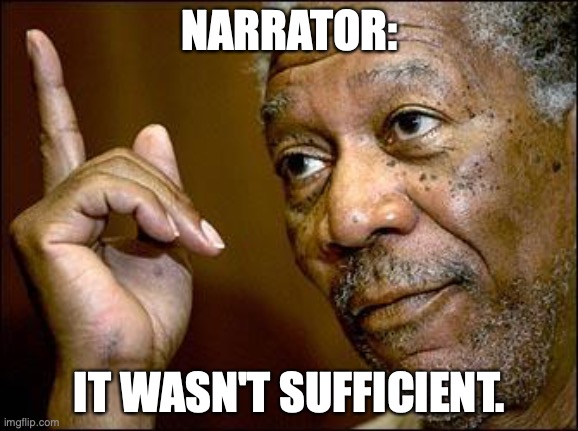The Five Most Common Problems with Introductions

1. No problem statement.
The basic structure of an introduction has three key components: background information that the reader needs to understand the problem, the problem statement that provides the tension and motivation to engage the reader, and the resolution to the problem that says what the author is going to do to resolve the issue raised by the problem statement.
Of these three components, the most critical component is the problem statement. The whole of the introduction revolves around the problem statement.
The problem statement is the hook to gain the reader’s attention and draw them into your paper. Just as movies engage the audience by conflict, so, too, should a scientific paper focus around a conflict. This conflict may entail some kind of paradox, error, or inconsistency in the previous literature; the lack of knowledge on the subject; or a general misunderstanding of the problem. If your paper does not have a hook, then ask what is unique about the research and why does it need to be communicated to others. Why do they need to pay attention?
– Eloquent Science, p. 34
Introductions without problem statements are easy to spot in the wild. Such an introduction presents the background information then jumps right to “and here’s what we’re going to do in this paper.” The reader has no context for why this work is important and needs to be done, or even why the particular data and methods chosen are the best. Simply, the scientific justification for the research is lacking.
The easiest thing to do when writing an introduction is to write the problem statement first. Once the problem statement is written, it defines the content needed for the background-information component. That content will be all the information that your audience will need to understand the problem statement. No more, and certainly no less.
Similarly, with the problem statement defined, then the resolution to the problem statement is easier to write, as well. It’s your plan to address the problem raised by the problem statement!
This approach (i.e., writing the problem statement first) can help you write a better introduction in less time than you would otherwise.
2. Long literature reviews.
Another problem with many introductions is long-winded literature reviews. I suspect that authors think they need to include all this information because they need to cite the “relevant” literature. But, literature reviews should not be so excessive that the reader loses interest or fails to see where the introduction is going. The literature needs to be explained as it pertains to the problem statement.
Often, these long-winded introductions start at a basic level and read like the introduction or literature-review chapters of PhD dissertations! Instead, present only background information that is needed for your intended audience to understand the problem statement. You don’t need to be too elementary; remember that experts with PhDs are going to be reading your manuscript. Keep your introduction focused.
3. Unnecessarily broad or vague statements.
Consider these three statements.
1. DRAFT: “Climate change affects all living organisms on Earth.”
2. DRAFT: “Land-falling tropical cyclones cause much damage and many casualties.”
3. DRAFT: “Lake-effect precipitation has long been a challenging research area because of the complexity of the interaction between the atmosphere and the Earth’s surface.”
You may have seen similar statements to these in scientific articles that you’ve read. On the surface, they are true statements and one would find it hard disagree with them. Dig deeper, however, and you’ll probably start to see the weaknesses in these statements. At the minimum, they are throw-away sentences that say little of substance and are not memorable. If I’m a reader, my eyes glaze over them as I rush onward through the text to hopefully find some real content next.
In the first example, the statement is so broad that it is hard to see how one could evaluate this statement to be true or not. No doubt anthropogenic climate change is a serious concern, but is every single organism on Earth going to be affected? As an extreme example (no pun intended), the extremophiles living in the Yellowstone hot springs are probably not going to care about a few degrees increase in air temperature.

Who us?
Source: https://sayostudio.com/portfolio/heat-and-sulphur-extremophiles/
Naturally, we want to write demonstrably true statements in our scientific papers to engender confidence in our readers that we know what we are writing about. Thus, this example does not serve your readership.
Solution: Think of a different way to make the point of how climate change is affecting specific ecosystems or organisms, and write it that way.
1. IMPROVED: “Anthropogenic climate change has already been affecting Arctic ecosystems through declining ice-inhabiting species (REFS), declining freshwater-fish numbers due to warmer stream waters (REFS), and poleward migration of species (REFS).”
The second example needs more quantification and specification. What region? Over what time period? How much damage? How many deaths and injuries? Of course, the addition of these numbers to the sentence should imply adding a citation or citations, as well.
2. IMPROVED: “Land-falling tropical cyclones on the Gulf Coast of North America between 1980 and 2020 caused $X billion in insured damages (REF), Y injuries (REF), and Z deaths (REF).”
The third example is perhaps the best of the three, but still has some weaknesses. For example, the sentence has a number of vague words that limit the ability of a critical reader to get precise information from it.
- “Long been”: During what period of time? The last 20 years? The last 50 years? The last 100 years? Is specifying a starting point for the origin of the “challenge” even an important point to make?
- “complexity”: In what way are the processes complex?
- “interaction”: Can the author be more specific about what kind of interaction is meant?
3. IMPROVED: “Better predictions of the timing and intensity of Great Lake–effect precipitation has been challenging because of the difficulty of obtaining observations of sensible and latent heating over the water (REFS).”
By carefully choosing words that have precision, by ensuring that statements you make are not vague, and by citing quantitative information from relevant literature, you can make your weak sentences stronger and more engaging to your reader.
4. Long lists of citations without context.
In some of the examples above, I’ve shown the importance of including citations to reference substantive information from other sources. However, how many citations are appropriate? Let’s consider this example.
DRAFT: “Many studies have demonstrated that heavy rain is associated with landfalling tropical cyclones (e.g., Namias and Dunn 1955; Farfán and Zehnder 2001; Wu 2001; Atallah and Bosart 2003; Biggerstaff et al. 2005; Marchok et al. 2007; Jiang et al. 2008a,b; Didlake et al. 2009; Quilfen et al. 2010; Ebert et al. 2011; Zhang et al. 2016; Jenkins et al. 2017).”
The first thing you might say is that the sentence needs to be written more precisely. There’s far too many studies on heavy rain and landfalling tropical cyclones to cite, let alone pick this meager list of 13 studies from. True. So, the premise of the sentence in the first place is a bit misguided.
Then the next thing you might say is that these 13 studies are all different kinds of studies: observational (of which there are surface data, satellite, and radar), modeling, climatological, etc. There’s no commonality among these 13 studies other than that they were found from an online search when I was looking for heavy precipitation and tropical cyclones together in the same article. Referring back to the example above about climate change and Arctic ecosystems, at least that author broke it up into three different groupings of different pieces of evidence (i.e., declining ice-inhabiting species, declining freshwater-fish numbers due to warmer stream waters, poleward migration of species), each with their own independent list of citations. Much smarter!
Such long lists of citations are not scholarship. They say to the reader that I’ve collected a long list of citations on a topic and this list alone was sufficient to show that I understand the discipline.

A rare instance where I think such long lists of citations can be useful is where the author is trying to emphasize a point by exhausting the reader with a long list of citations. For example, “Here is a point that might seem shocking to you, but you’ll be surprised at how many studies cite it (e.g., Paper 1; Paper 2; Paper 3; Paper 4; Paper 5; Paper 6; Paper 7; Paper 8; Paper 9; Paper 10).”
5. One or two citations for a statement requiring more citations.
On the other end of the spectrum are examples like the following:
1. DRAFT: “SARS-CoV-2 is spread via droplets exhaled by an infected individual (Morawska and Cao 2020).”
2. DRAFT: “The warm conveyor belt may split into cyclonic and anticyclonic parts (Mass and Schultz 1993).”
3. DRAFT: “The extreme hurricane seasons of 2004 and 2005 motivated research into the role of sea-surface temperatures and climate change on hurricanes (Emanuel 2005).”
Each of these sentences make a specific statement and provides one citation. In reality, one citation is insufficient to illustrate that the statement is well supported by scientific literature. Each of these three sentences could be supported by more than one citation, and more than one citation should be provided. Unlike previous examples in this blog post, each of these statements is specific enough and with a small enough number of citations possible that the task of providing a more substantial (but not excessive) list isn’t onerous.
Certainly, in sentence 3, the author says that these hurricane seasons motivated research, but then only cites one study! It’s the lazy approach to citation. More studies need to be cited. Thus, for these examples, sensible revisions to these sentences require that a small number of citations should each be provided at the end of the sentence.
For more on writing introductions, read section 4.6 of Eloquent Science. Your library may already be subscribing to it, making access to you free. Check here: http://bit.ly/EloqSci.


